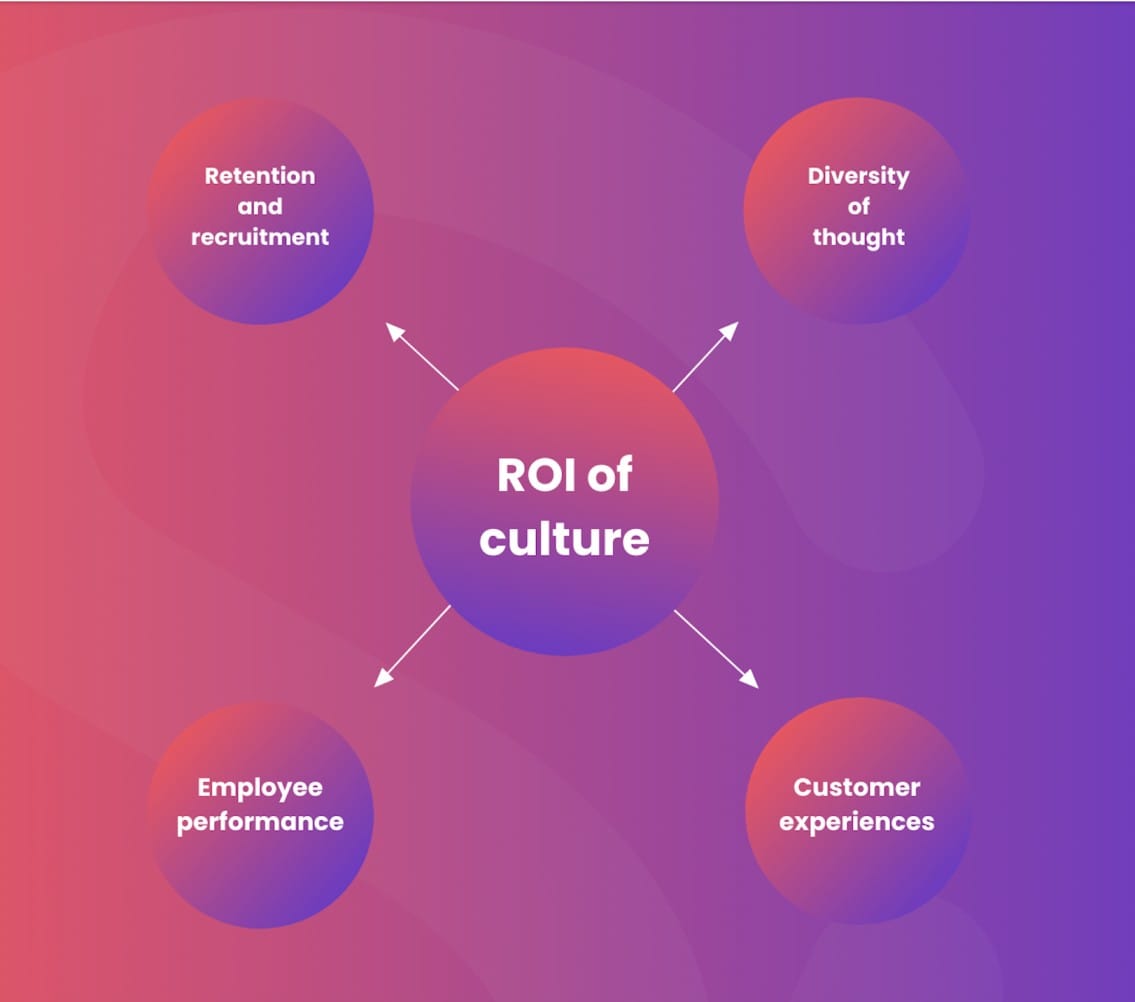This article is based on Katie's keynote presentation at Customer Success Festival Sydney 2022.
During my tenure at LinkedIn, I've learned that one of the most important drivers of team success is something intangible yet immensely powerful: culture.
Too often, culture is seen as fluffy or secondary to tangible business goals. But the reality is, culture should never be an add-on – it must be an integral part of how we lead our teams.
I'm passionate about fueling culture to foster inclusivity, unleash peak performance, and inspire authentic action from employees.
In this guide, I'll share my philosophy on team culture, backed by real-world examples and data insights. You'll learn practical strategies for customer success leaders to build thriving cultures that empower teams and drive extraordinary business outcomes. Keep reading if you want to gain an understanding of:
- Team culture
- The power of an inclusive culture
- Diversity, inclusion and belonging
- Practical tips for customer success leaders
- The statistics behind culture
- The ROI of your investments
Shall we begin?
Understanding team culture
Every team has a culture, whether explicitly defined or not. At its core, team culture encompasses the values, beliefs, attitudes, and behaviors shared by team members. It's the unspoken guidelines for how we work together, communicate, and make decisions.
Just as every individual has their own unique personality, teams develop their own distinct cultures shaped by the diverse personalities, backgrounds, and experiences of their members. An unhealthy team culture can breed toxicity and dysfunction. A thriving culture, on the other hand, cultivates collaboration, psychological safety, and peak performance.
As a leader, your role is not just to assemble a talented team, but to intentionally shape the cultural environment that allows that talent to truly shine.
The power of an inclusive culture
At LinkedIn, we have a saying: "Happy employees equal happy customers." This mantra reflects the deep connection between the workplace culture we create for our employees and the experiences we deliver for our customers.
When employees feel cared for, included, and empowered to be their authentic selves, the ripple effect is immense:
- They are 3.2 times more likely to be happy at work. Happiness is infectious - it radiates outward, enhancing collaboration and fueling peak performance.
- They are 3.7 times more likely to be passionate advocates who recommend your company to others. A strong, inclusive culture is a magnet for top talent in today's competitive recruitment landscape.
- They provide exceptional customer experiences. Unhappy, disengaged employees simply cannot deliver the empathetic, proactive service that builds lasting customer relationships and loyalty.
So what does an inclusive culture look like in practice? It starts with ensuring every individual feels welcomed, valued, and drawn into important conversations and decisions. It's about creating psychologically safe environments where people feel empowered to speak up, share ideas, and be their full, authentic selves without fear of judgment or consequences.
On my own team at LinkedIn, we took steps to understand different communication styles and create spaces tailored to introverts and extroverts alike. For example, we did a "Working with Introverts" training session to appreciate the unique strengths of our more reserved teammates and give them opportunities to have their voices heard.
In one case, we had a highly experienced but introverted colleague who often remained quiet while our Gen Z team member enthusiastically shared ideas. By consciously making space and slowing down conversations, we empowered our introverted colleague to contribute her invaluable wisdom and perspective. Practices like this strengthen team dynamics and cohesion.

Diversity, inclusion and belonging (DIB)
An inclusive culture is built on three pillars: diversity, inclusion, and belonging. Here's what each pillar represents:
Diversity is the glorious mix of different backgrounds, identities, experiences, abilities and perspectives present in your team.
Inclusion means proactively ensuring each of those diverse voices and perspectives is welcomed into conversations and decision-making processes.
Belonging is the profound feeling of being authentically valued, accepted and celebrated for your truest self and all the unique gifts you bring to the table.
Too many companies stop at diversity, checking a box by assembling a diverse group of people but failing to cultivate the inclusive environment and deep sense of belonging required to reap the extraordinary benefits of diversity. When you harness the power of DIBs, you unlock incredible collaboration, innovation and growth.

One of my most profound experiences with the transformative impact of belonging happened with a new colleague who joined LinkedIn. Despite over 20 years of prior experience, he shared that in his first week at LinkedIn, he finally felt able to bring his full, authentic self to work – to truly belong. He’d found a supportive home to share important parts of his identity and personal story that had been suppressed in previous roles.
Imagine the unbridled creativity, passion and commitment that gets unleashed when every single team member experiences that level of acceptance and belonging! Those are the hallmarks of an unstoppable, high-performing culture.

Practical tips for customer success leaders
So how can customer success leaders put this into practice and cultivate incredible team cultures? From personal experience, I recommend:
1. Increasing diversity, inclusion and belonging awareness and education
Simply raising awareness is a crucial first step. Provide education on the principles of diversity, inclusion, belonging and cultural intelligence. Look at training resources to build an understanding of diverse communication styles, unconscious biases, microaggressions and how to be an ally.
2. Creating safe spaces
Establish dedicated forums, feedback channels and open discussion opportunities where team members feel safe to be vulnerable, share perspectives and co-create cultural norms. One powerful exercise my team did was run "unfiltered" sessions with no agenda - just open forums for real, authentic conversations to bubble up.
3. Celebrating diverse identities and traditions
The team I lead has members from 16 different countries, so what did we do? We made it a point to celebrate diverse cultural holidays and invite colleagues to share insights into traditions that enrich our cultural literacy. We even created a global "culture" playlist where team members contributed their favorite songs and the stories behind them.
4. Proactively seeking quieter voices
Work proactively to draw out voices and perspectives that may get drowned out, whether due to introversion, communication styles or unconscious bias. Tactics like breaking into small groups and using digital whiteboards give more reserved individuals opportunities to be heard.
5. Leading with listening and curiosity
The best leaders lead by asking questions, listening intently and exhibiting genuine curiosity and care about team members' experiences, identities and aspirations. Inclusive leaders proactively make space for others – avoid dominating conversations and let diverse voices shine.

The statistics behind culture
The business case for prioritizing culture is overwhelming. In addition to being 3.7 times more likely to recommend your company to prospective hires, data shows:
- 66% of Gen Z employees want to see greater investment in mental health support to enhance workplace culture and environment. In the age of the “Great Resignation” talent wars, mental health and wellness are key to attracting and retaining younger employees.
- Four in ten millennials say they feel stressed or anxious at work all or most of the time. As a demographic making up over a third of today's workforce, millennial expectations can't be ignored.
Culture is one of the top drivers of employee engagement, performance and retention. According to a Gallup survey, disengaged employees cost U.S. companies between $450–$550 billion annually in lost productivity. An engaging, inclusive culture keeps your workforce motivated and productive.
Most importantly, data proves that robust cultures of empowerment and support translate to superior customer experiences that ultimately drive growth and success.
Strategies for cultural transformation
If your current culture is falling short, all is not lost! Cultural change is an ongoing journey of intentionality, open-mindedness and sustained effort across your leadership team.
The process starts with leaders modeling authenticity, vulnerability and an insatiable commitment to continuous learning and growth. You must embody the attributes and behaviors you want to instill in your team.
Next, co-create the vision for your desired culture together with your team. What values, mindsets and behaviors will you cultivate? How will you make your cultural aspirations tangible in everyday workflows, decision-making, communication and interactions? Gain team-wide input and buy-in.
Over time, reinforce desired cultural norms through consistent practices and rituals. Demonstrate the behaviors you want to see through the way you lead meetings, give feedback, recognize excellent work, and address conflicts or underperformance issues. What gets recognized gets replicated.
Most importantly, lead with empathy and patience. Transforming an organizational culture takes time and will encounter stumbles and resistance along the way. Persist through the challenges and celebrate small wins.

The ROI of your investments
Investing in developing a robust, inclusive team culture is one of the highest-return activities for customer success leaders. The payoffs span:

Retention and recruitment
Top talent wants to work in fulfilling, supportive environments. Companies investing in culture and belonging attract the industry's best while keeping their superstar employees engaged and loyal.
Diversity of thought
A culture of belonging allows you to fully harness the power of cognitive diversity - where different backgrounds, experiences and perspectives spark higher creativity and innovation. This translates into better problem-solving for your customers' toughest challenges.
Employee performance
Countless studies show that employees who feel cared for, included and able to bring their full selves to work are more engaged, motivated and productive. An intentional culture maximizes your team's potential.
Customer experiences
At the end of the day, your employees' passion, energy and initiative make the difference between checkbox task completion and consultative collaboration that drives measurable value for customers. Highly engaged employees deliver the above-and-beyond service that builds retention and advocacy.
When you invest in building an intentional culture of inclusivity, empowerment and belonging, the returns on investment are exponential across talent, performance, customer success and overall business outcomes.

The journey continues…
While phrases like "culture matters" and "our people are our greatest asset" are popular corporate platitudes, truly embodying those beliefs as a leader is a profound and transformational work.
It requires shedding the mindset that culture is a "nice-to-have" extra task and elevating it to a strategic imperative that unlocks incredible organizational potential. It means resisting the urge to slap a fresh coat of paint on a fundamentally flawed cultural foundation - and instead doing the hard work of overhauling antiquated behaviors, biases, and ways of operating.
Most powerfully, it demands leaders to embrace deep self-awareness and vulnerability. We must examine our own blind spots, triggers, and areas for personal growth as cultural catalysts.
Building thriving, high-performing cultures is the highest calling of leadership because it impacts lives on a human level. It's about creating environments where people feel safe to take risks, find purpose, and maximize their talents in service of something greater than themselves.
At its core, it's about leading with empathy and championing every individual's desires to feel valued, to learn and grow, to forge genuine connections, and to contribute their unique gifts in a profound way.
As customer success leaders, we must embrace this sacred responsibility and become architects of cultures that unleash the deepest reserves of human potential.
The journey is never complete, but every step forward creates expanding ripples of impact - for our teams, customers, businesses and the world around us. After all, happiness is contagious - and culture is the catalyst.
Don't struggle with leadership on your own
There's a treasure trove of leadership resources at your fingertips.
Pro+ membership is the pinnacle professional development experience, featuring enviable resources like this:
🔖 Explore our library of 10+ educational courses
🛠 75+ battle-tested and community-vetted templates
🎟️ One free ticket to an in-person Customer Success Festival
🔥 24/7 access to a community of 8,000+ customer success professionals


